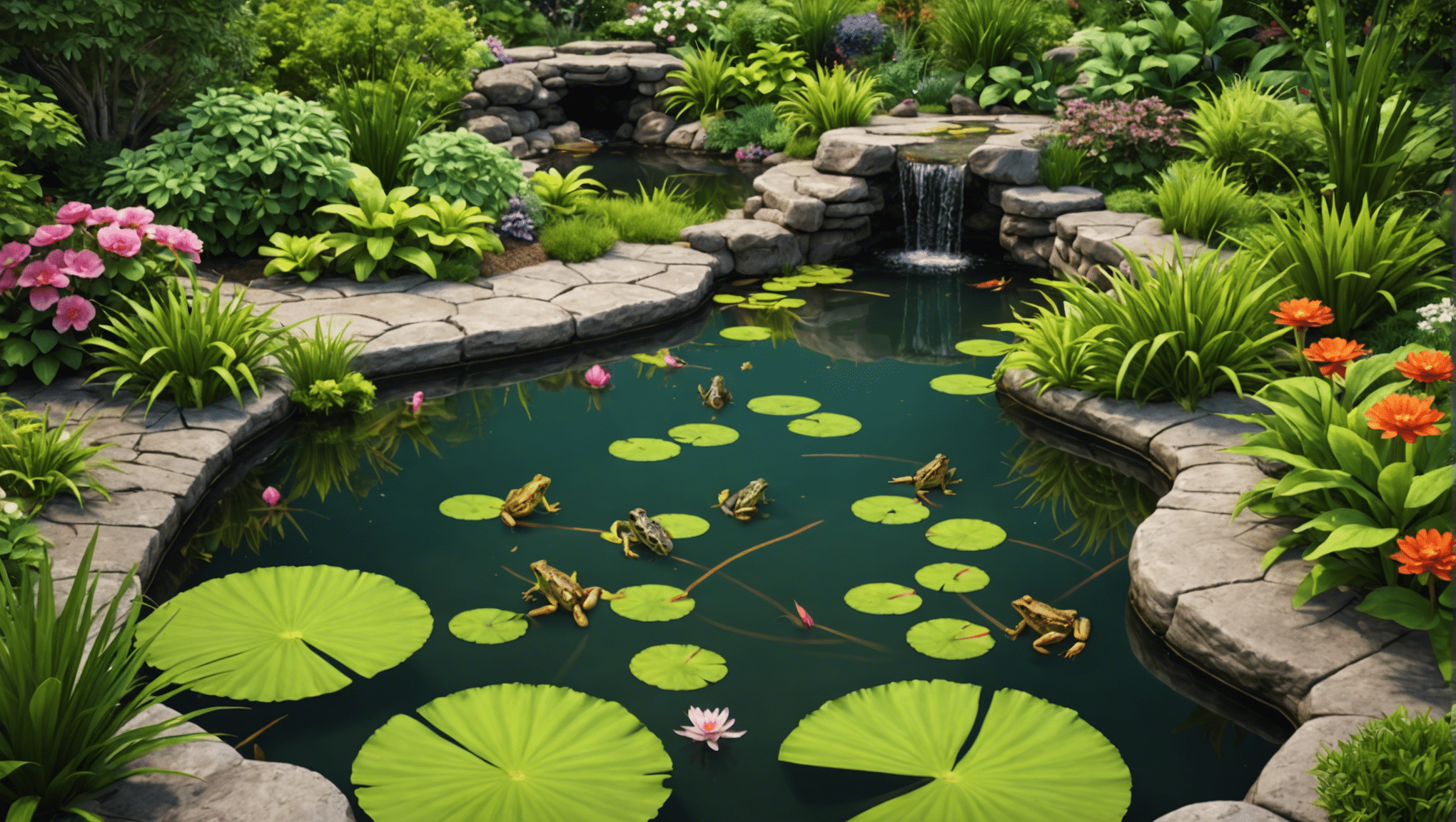Creating a vibrant and lively garden environment not only enhances the aesthetic appeal of your home but also plays a pivotal role in local biodiversity. One delightful element you can add is a small frog pond. This natural feature serves as an attractive habitat for frogs and other small creatures, enriching your garden ecosystem significantly.
Benefits of Having a Small Frog Pond
Introducing a small frog pond into your garden isn’t just about adding a water feature—it’s about creating a hub of life. Frogs are known for their role in pest control, consuming large quantities of insects, including mosquitos and their larvae. This can help reduce the need for chemical repellents and contribute to a more natural garden maintenance routine. Additionally, frog ponds can serve as crucial breeding grounds, supporting declining amphibian populations in many regions.
Designing Your Frog Pond
When it comes to designing your pond, size and depth are key considerations. A pond that is too shallow may dry out during warmer months, while one that is too deep may not provide the warm, sunlit shallows that frogs prefer for breeding. A depth of about 24 inches is typically ideal, with shallower, sloped edges that allow for easy access. Incorporating various plants such as water lilies and marginal plants not only adds to the beauty of your pond but also provides essential cover and oxygen to the water.
Incorporating a small, gentle waterfall or another form of water circulation can help maintain the cleanliness and oxygen levels of the pond, making it a healthier habitat for all its inhabitants.
Choosing the Right Location
The location of your frog pond can greatly affect its ecological success. Ideally, it should be placed in a spot that receives ample sunlight during the day but is also shaded during the hottest parts of the afternoon. Avoid placing the pond under trees where falling leaves may accumulate and decay, leading to excessive nutrient build-up and possible eutrophication.
Maintaining Your Frog Pond
Once your frog pond is set up, maintenance is crucial for keeping a healthy balance in this mini-ecosystem. Avoid using pesticides and herbicides in and around the pond, as these can be harmful to the aquatic life. Regularly check the water level and quality, topping it up during dry spells without overfilling it, to maintain adequate conditions for the pond’s inhabitants.
- Monitor water quality for signs of algae bloom
- Clean debris and fallen leaves regularly to prevent decay and oxygen depletion
- Manage plant growth to ensure no single species dominates the space
- Encourage natural predators, like dragonflies, to control mosquito populations
Creating a Safe Haven for Wildlife
Beyond just frogs, your pond will likely attract other wildlife, turning your garden into a small nature reserve. Birds, dragonflies, and even small mammals like hedgehogs may come to drink or feed. To enhance this aspect, consider planting native shrubs and flowers around the pond to provide additional food and shelter for these visitors, creating a more integrated ecosystem.
Frequently Asked Questions
Q: How do I ensure that the pond remains safe for frogs during winter?
A: To protect frogs in your pond during colder months, ensure part of the pond is at least deep enough to prevent completely freezing. You can also float a small ball or similar object to keep an area of the surface ice-free, allowing for gas exchange.
Q: Are there any specific frog species I should aim to attract?
A: This largely depends on your region. Consulting with local wildlife experts can help you understand which species are native and beneficial to your area’s ecology.
Q: How do I handle the buildup of algae?
A: Keeping the pond balanced with the right mix of plants, fish that eat algae, and possibly a UV filter can help control algae growth.
Adding a small frog pond to your garden not only brings a piece of nature closer to home but also contributes to the broader ecosystem, supporting local wildlife populations and adding beauty and interest to your outdoor space. By carefully planning, designing, and maintaining your pond, you can enjoy the myriad benefits of a thriving amphibian habitat in your own backyard.












